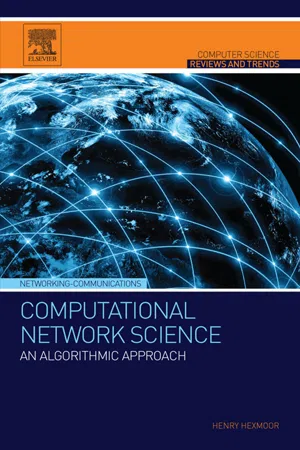
- 128 pages
- English
- ePUB (mobile friendly)
- Available on iOS & Android
About This Book
The emerging field of network science represents a new style of research that can unify such traditionally-diverse fields as sociology, economics, physics, biology, and computer science. It is a powerful tool in analyzing both natural and man-made systems, using the relationships between players within these networks and between the networks themselves to gain insight into the nature of each field. Until now, studies in network science have been focused on particular relationships that require varied and sometimes-incompatible datasets, which has kept it from being a truly universal discipline.
Computational Network Science seeks to unify the methods used to analyze these diverse fields. This book provides an introduction to the field of Network Science and provides the groundwork for a computational, algorithm-based approach to network and system analysis in a new and important way. This new approach would remove the need for tedious human-based analysis of different datasets and help researchers spend more time on the qualitative aspects of network science research.
- Demystifies media hype regarding Network Science and serves as a fast-paced introduction to state-of-the-art concepts and systems related to network science
- Comprehensive coverage of Network Science algorithms, methodologies, and common problems
- Includes references to formative and updated developments in the field
- Coverage spans mathematical sociology, economics, political science, and biological networks
Frequently asked questions
Information
Ubiquity of Networks
Abstract
Keywords
1.1. Introduction
Table of contents
- Cover
- Title page
- Table of Contents
- Copyright Page
- Preface
- Chapter 1: Ubiquity of Networks
- Chapter 2: Network Analysis
- Chapter 3: Network Games
- Chapter 4: Balance Theory
- Chapter 5: Network Dynamics
- Chapter 6: Diffusion and Contagion
- Chapter 7: Influence Diffusion and Contagion
- Chapter 8: Power in Exchange Networks
- Chapter 9: Economic Networks
- Chapter 10: Network Capital
- Chapter 11: Network Organizations
- Chapter 12: Emerging Trends
- Appendix